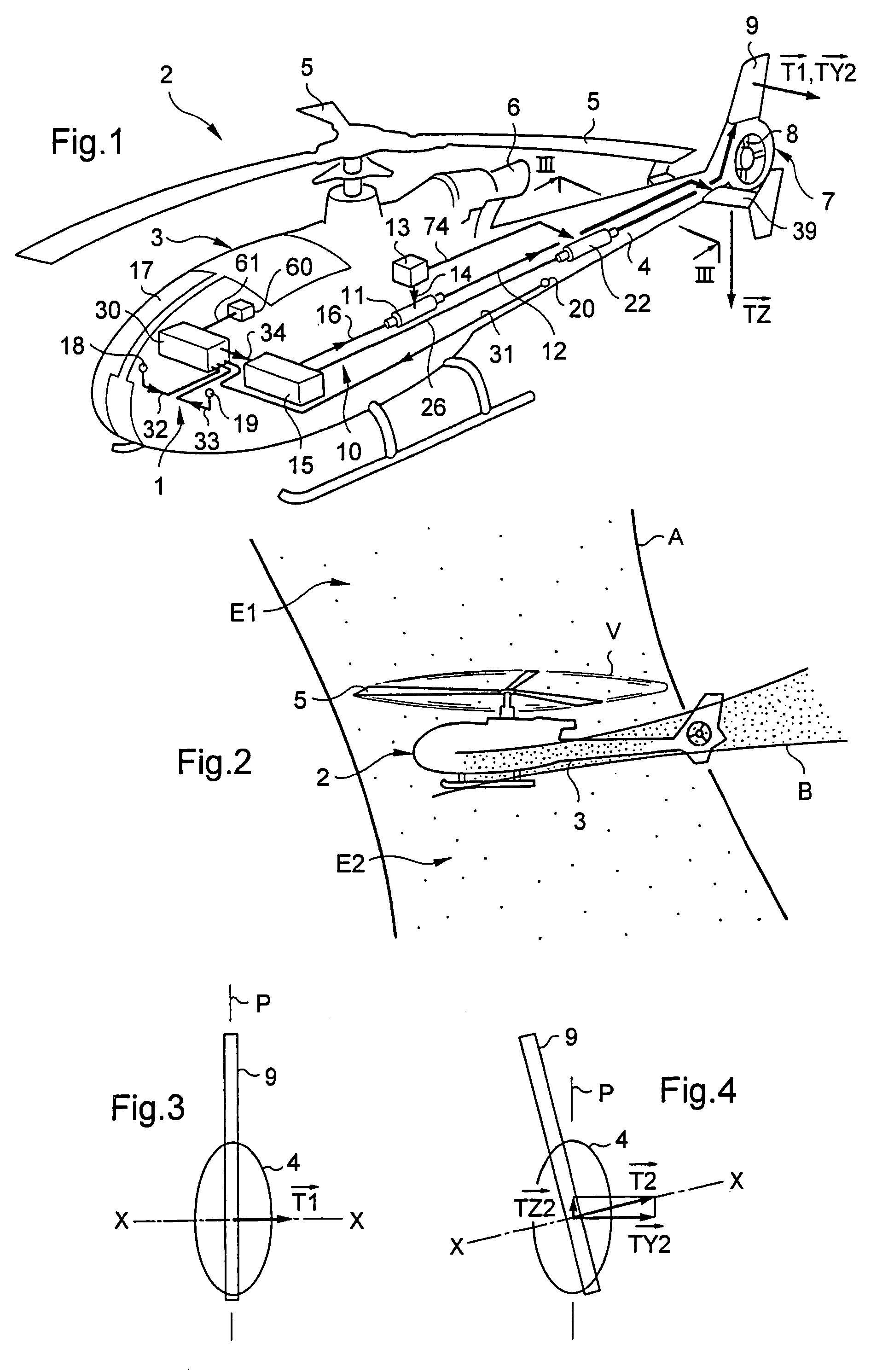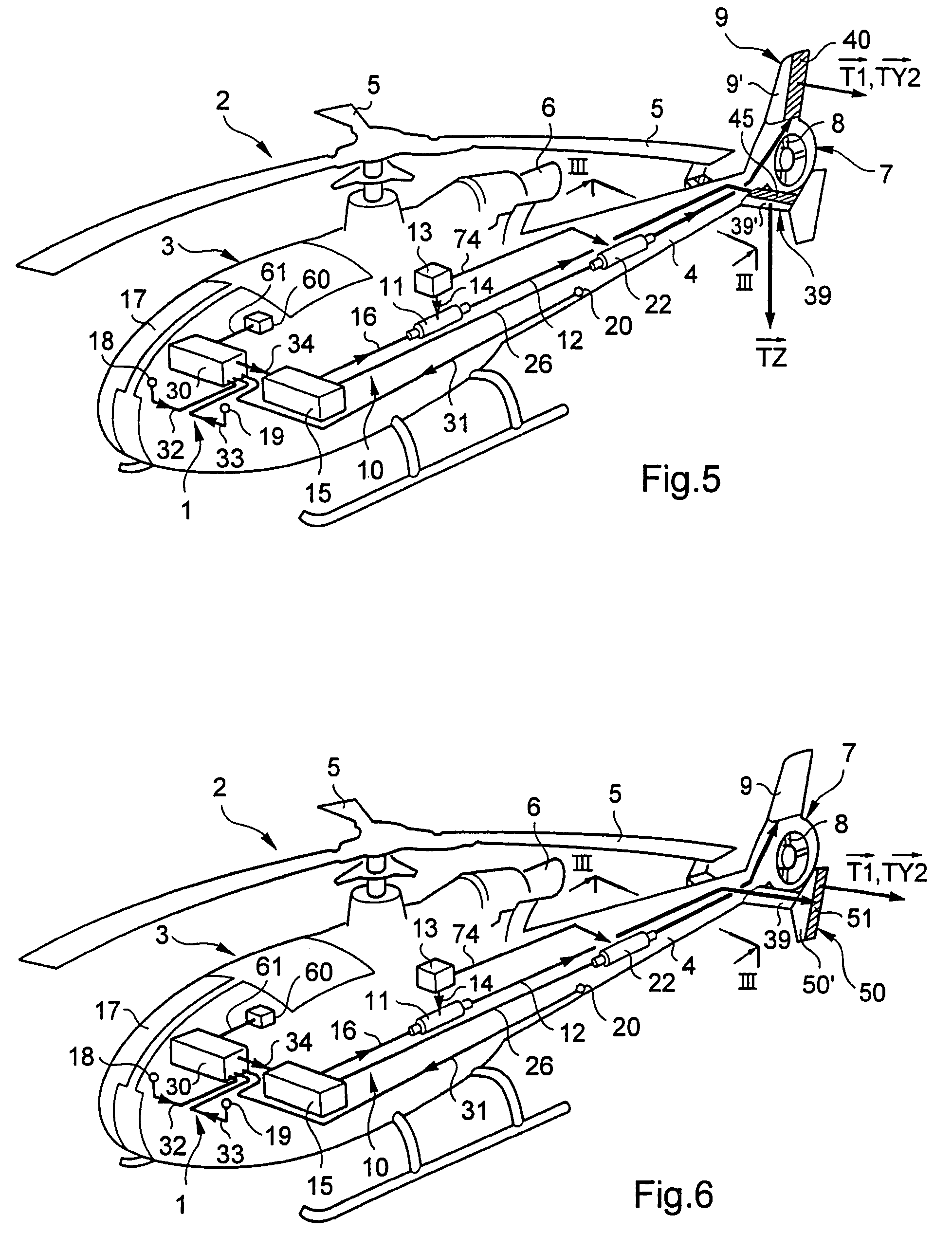Method for using a tiltable stabilizer to reduce vibration generated on the fuselage of a helicopter
a technology of a helicopter fuselage and a tiltable stabilizer, which is applied in the direction of propellers, rotocraft, position/direction control, etc., can solve the problems of increasing drag and turbulence, affecting the structure as a whole and the mechanical elements of the helicopter, and reducing the level of vibration, so as to reduce or even eliminate the vibration generated.
- Summary
- Abstract
- Description
- Claims
- Application Information
AI Technical Summary
Benefits of technology
Problems solved by technology
Method used
Image
Examples
Embodiment Construction
[0069]The device 1 of the invention and shown diagrammatically in FIG. 1 is intended to reduce vibration of the kind known as “tail shake”, which vibration occurs in the structure of a helicopter 2, as described below.
[0070]As can be seen in FIG. 1, said helicopter 2 comprises:[0071]a fuselage 3 extended rearwards by a tail boom 4;[0072]a main rotor 5 for providing lift and propulsion that is driven by means of drive delivered by an engine 6;[0073]a tail rotor 7 provided in known manner with blades 8 serving to compensate the yaw torque of said main rotor 5; and[0074]a substantially horizontal stabilizer 39.
[0075]Said substantially horizontal stabilizer 39 used for providing said helicopter 2 with stability in pitch can be tilted to vary its angle of incidence by means of a control system 10 which comprises:[0076]an actuator 11 or the like (connected to a connection 12 represented diagrammatically to said substantially horizontal stabilizer 39) and powered from a power source 13 via...
PUM
 Login to View More
Login to View More Abstract
Description
Claims
Application Information
 Login to View More
Login to View More - R&D
- Intellectual Property
- Life Sciences
- Materials
- Tech Scout
- Unparalleled Data Quality
- Higher Quality Content
- 60% Fewer Hallucinations
Browse by: Latest US Patents, China's latest patents, Technical Efficacy Thesaurus, Application Domain, Technology Topic, Popular Technical Reports.
© 2025 PatSnap. All rights reserved.Legal|Privacy policy|Modern Slavery Act Transparency Statement|Sitemap|About US| Contact US: help@patsnap.com



